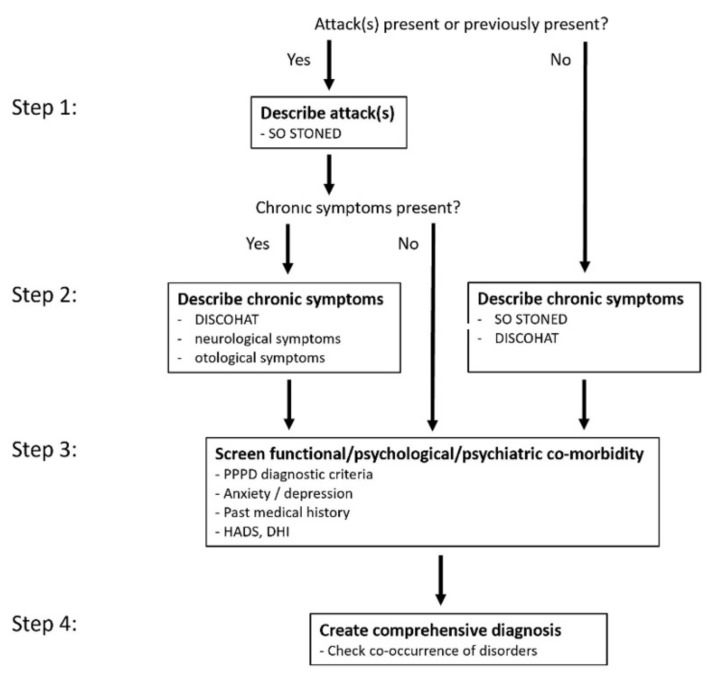Figure 1.
The 4-step approach to history taking in patients with non-acute vestibular symptoms. Each step investigates different aspects of vestibular disorders, while focusing on ‘one aspect at a time’. It explicitly screens for acute and episodic vestibular syndromes (step 1); chronic vestibular syndromes (step 2); and functional, psychological, and psychiatric co-morbidities (step 3). The aim is to identify all vestibular disorders occurring at the same time in the same patient, in order to create a comprehensive diagnosis (step 4). The ‘O’ and ‘T’ of ‘SO STONED’ are underlined, to emphasize the importance of paying specific attention to the aspects ‘how Often’ (=time course) and ‘Triggers’ of symptoms. SO STONED = acronym of ‘Since when, how Often, Symptom quality, Triggers, Otological symptoms, Neurological symptoms, Evolution, Duration’; DISCOHAT = acronym of ‘Darkness worsens symptoms, Imbalance, Supermarket effect, Cognitive complaints, Oscillopsia, Head movements worsen symptoms, Autonomic complaints, Tiredness’; PPPD = Persistent Postural Perceptual Dizziness; HADS = Hospital Anxiety and Depression Scale; DHI = Dizziness Handicap Inventory.

